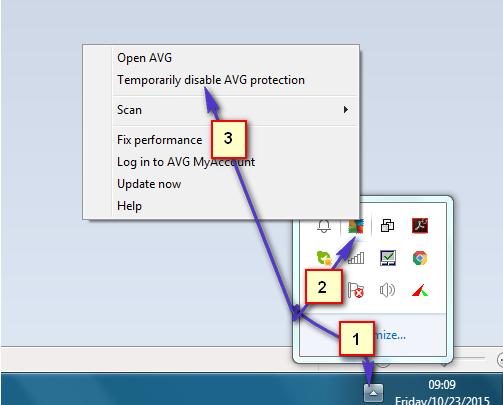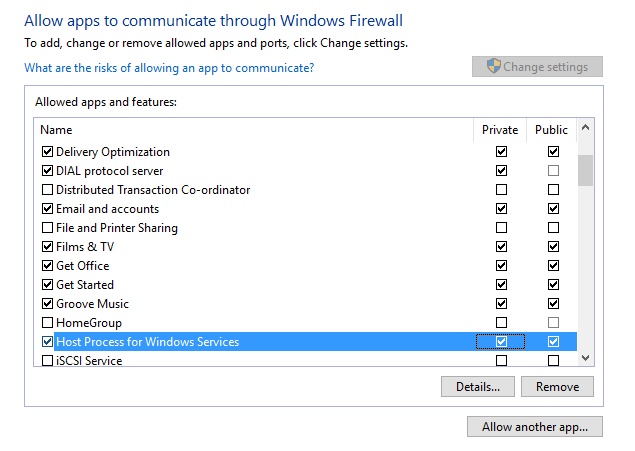Fix: Mail Sync Error 0x80072726 and 0x8007274
There have been quite a few complaints about the Windows 8/8.1 and 10 Mail app being unable to sync with email accounts or send and receive any emails. It presents the user with an error message along the lines of, ‘We’re having a problem downloading messages. Try again later. Error code 0x8007274c and 0x80072726.‘ The average computer user certainly needs to send and receive emails. Given that the Mail app is a handy email client available to all Windows 8/8.1 and 10 users, this issue is of utmost urgency.
The following are the various methods that you can use to fix any issues involving Email syncing/sending/receiving problems in relation to error code 0x8007274c and 0x80072726.
Method 1: Disable the third-party firewall that you are using
The most common culprits behind error codes 0x8007274c and 0x80072726 are third-party firewall applications, such as BitDefender and AVG, that do not allow the Mail app to communicate with the internet through the firewall, thus inhibiting the application’s ability to sync, receive, and send emails. Simply disabling any third-party firewall programs, or completely uninstalling them for that matter, and using the default Windows Firewall instead will return the Mail app back to normal. With no third-party firewall standing between it and the World Wide Web, the Mail app will easily be able to sync with any and all email accounts, and retrieve and send emails.
Most third-party applications can be easily disabled by right-clicking on the application’s (firewall/antivirus) icon in the lower right corner, where the clock is, and choosing ‘Temporarily Disable AVG Protection’ or a similar option if using another third-party application. You can also refer to the steps at the bottom to allow only the svchost.exe process.
If you don’t want to disable it, you can proceed with the methods below to add it as an exception. Since there are a lot of anti-virus and third-party applications, I’m going to list the steps for the most commonly used ones.

Allow the svchost.exe process to communicate (Windows Firewall)
In the event that you are receiving error codes 0x8007274c and 0x80072726, and you are not using a third-party firewall program, disabling Windows Firewall is not advisable. This is the only firewall protecting your computer, so disabling it could make your computer extremely vulnerable. Instead, consider the following alternatives:
Click on the ‘Start’ button located in the lower left corner, then type ‘Windows Firewall.’ Choose it from the list of results.

Then, choose ‘Allow on an app or feature through Windows Firewall,’ which is located in the left pane.

From the window that opens up, choose ‘Allow Another App’, locate the two svchost.exe files, and add them.
“Add the following”
C:\Windows\System32\svchost.exe
C:\Windows\SYSWOW64\svchost.exe
After it has been added, you will see a new app named ‘Host Process for Windows Service’ in the list of firewalls. Make sure it matches the image below.
Click OK to exit and test. If you are using a third-party firewall, choose the method below that best fits with your AV program, and follow the instructions.
Allow svchost.exe in Windows Defender.
From the lower left corner, click ‘Start’ and type ‘Windows Defender.’ Click and choose ‘Windows Defender’ from the list. Scroll down until you see ‘Exclusions,’ then click and add exclusion. Under ‘Processes,’ choose ‘Exclude an exe, com, or str process,’ and exclude the following:
C:\Windows\System32\svchost.exe
C:\Windows\SYSWOW64\svchost.exe
Adding svchost.exe in BitDefender.
If you are using BitDefender, then open it and choose Protections -> Firewall. Locate and click on Adapters, and add the network you’re on to trusted.
Add svchost.exe to AVG.
If you’re running AVG, you need to add the TCP Ports, which are 993 and 465, in the AVG Firewall. You can do this via the Firewall feature in AVG. AVG provides the instructions for this task, which you can find here.
